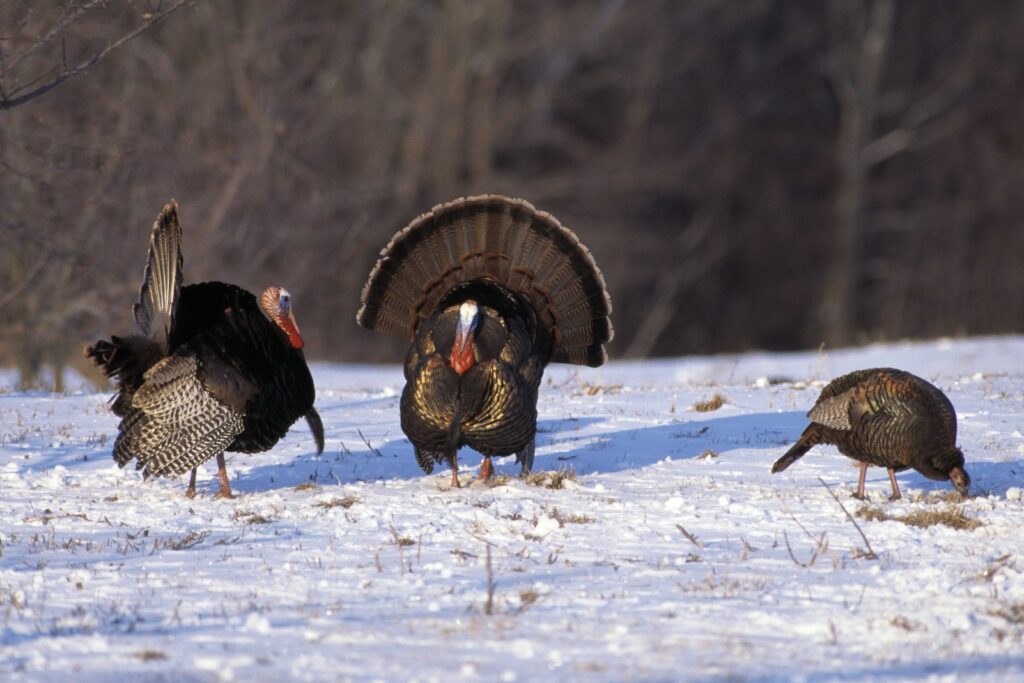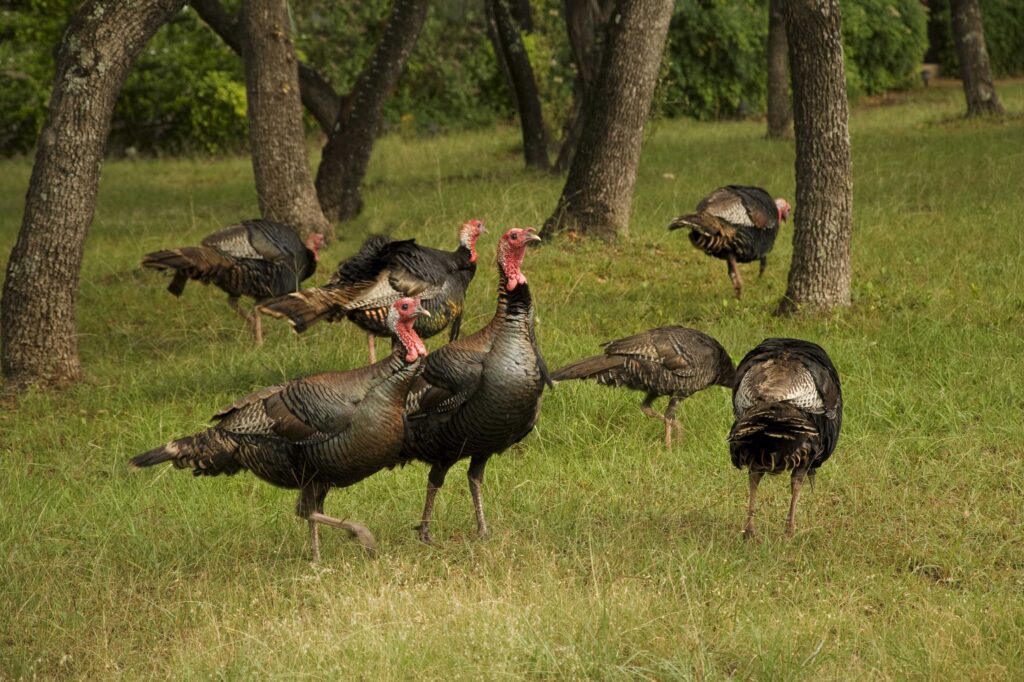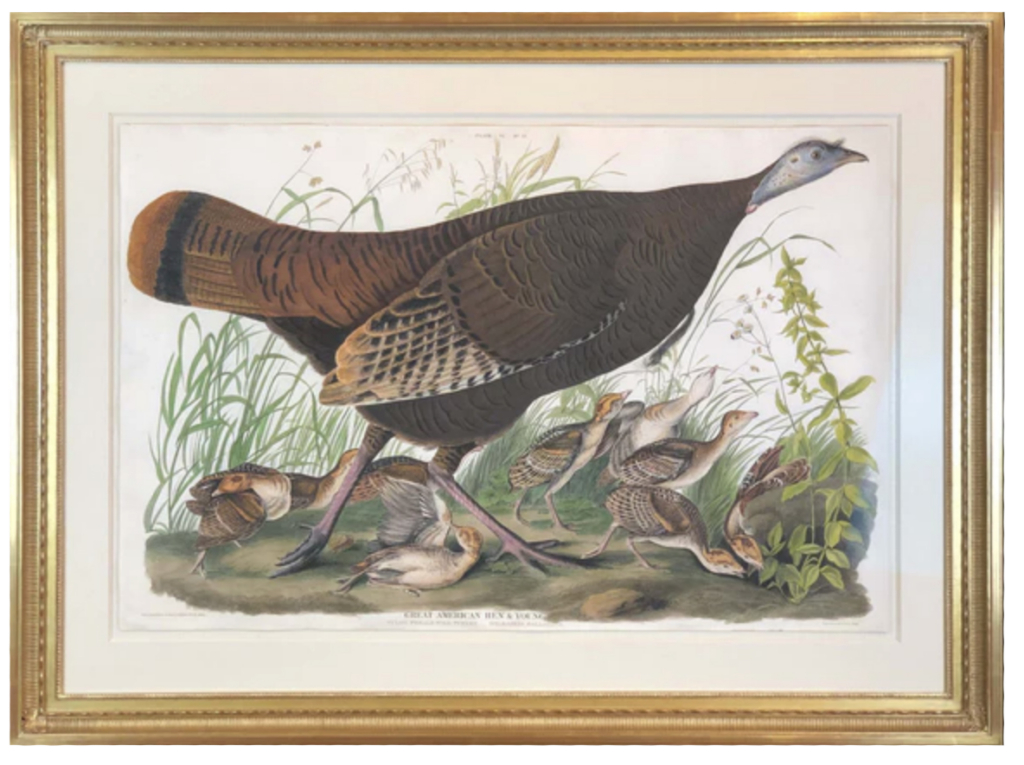If you’re thinking of running in the local “Turkey Trot” to work off some of your Thanksgiving dinner, keep in mind that a true turkey trot is more like a run; they move fast, up to 12 mph. We refer to our local eastern wild turkey, Meleagris gallopavo sylvestris. Although they can fly up to 40-55 mph, quite an amazing sight by itself, they prefer to run. The story of this big bird is a fascinating one, and we share some of the highlights with you here.

Lost from Long Island
When Europeans arrived in New York, the turkey was widespread. It was an important bird to the Native Americans and a resident of the eastern deciduous forest. As the settlers cleared the forest, the turkey became rarer and by the mid-1840s the last wild turkey had disappeared not just from Long Island but statewide. By the late 1800’s, 75% of NY State’s forest land had been cleared, depriving the wild turkey of their critical habitat. One hundred years later, a remnant population in Pennsylvania made an illegal border crossing and settled in southwestern New York. The recolonization of turkeys throughout New York was assisted by the regrowth of the native forest and relocation programs by the New York State Department of Environmental Conservation (NYSDEC). Because of formidable barriers such as New York City and major waterways, the turkey never got back to Long Island. It wasn’t until 1990 that the NYSDEC reintroduced 75 turkeys to Southaven County Park in Yaphank and Hither Hills State Park in Montauk. According to a 2022 press release by the NYSDEC, there are approximately 3,000 birds on Long Island. Turkeys are so plentiful that the NYSDEC has permitted a fall and now a spring hunting season.

Natural History
For those who don’t hunt, you can enjoy sightings of wild turkeys easily. They are frequently seen foraging by the side of our local roads and often crossing them. Finding their spectacular feathers along a trail is a special treat. If you surprise them you can sometimes get them to fly and even see them perch in trees, where they roost at night. They can be seen all year long, but a particularly rewarding time to see them is with a brood of poults (young birds) in August or during breeding season in spring when the toms or gobblers are spreading their large fan tails to attract more females. Turkey are polygamous. The males can weigh up to 25 pounds and in addition to their tails, and beards they have leg spurs used for defense. These weapons can be as long as 1.5 inches long. The hens are smaller weighing up to 12 pounds, don’t have the fan tail, and rarely have the beard or leg spurs. Most people are familiar with their calls, the infamous “gobble gobble” but they also cluck and yelp. They eat a wide variety of insects, including ticks, seeds, nuts (especially acorns and beech nuts), fruits and plants.
Iconic Bird

It is no surprise that the first bird in John James Audubon’s masterpiece Birds of North America is the wild turkey. Audubon died in 1851 so it is quite likely that he witnessed the decline of the bird he so magnificently painted. Ben Franklin also appreciated the wild turkey and proposed it as our national bird. As we all know, his proposal lost out to the bald eagle.
Thanksgiving Feast
We don’t know many people who have prepared or eaten wild turkey, but our local food expert, Florence Fabricant has. Florence shared that the wild turkey “is all dark meat, slightly gamey, very lean—needs larding (duck fat under the skin)… some guests loved it, others wanted white meat.” Another local resident shared his turkey hunting experience. “Wild turkey are wily and smart. They have excellent vision and hearing and are not easy to shoot.”
